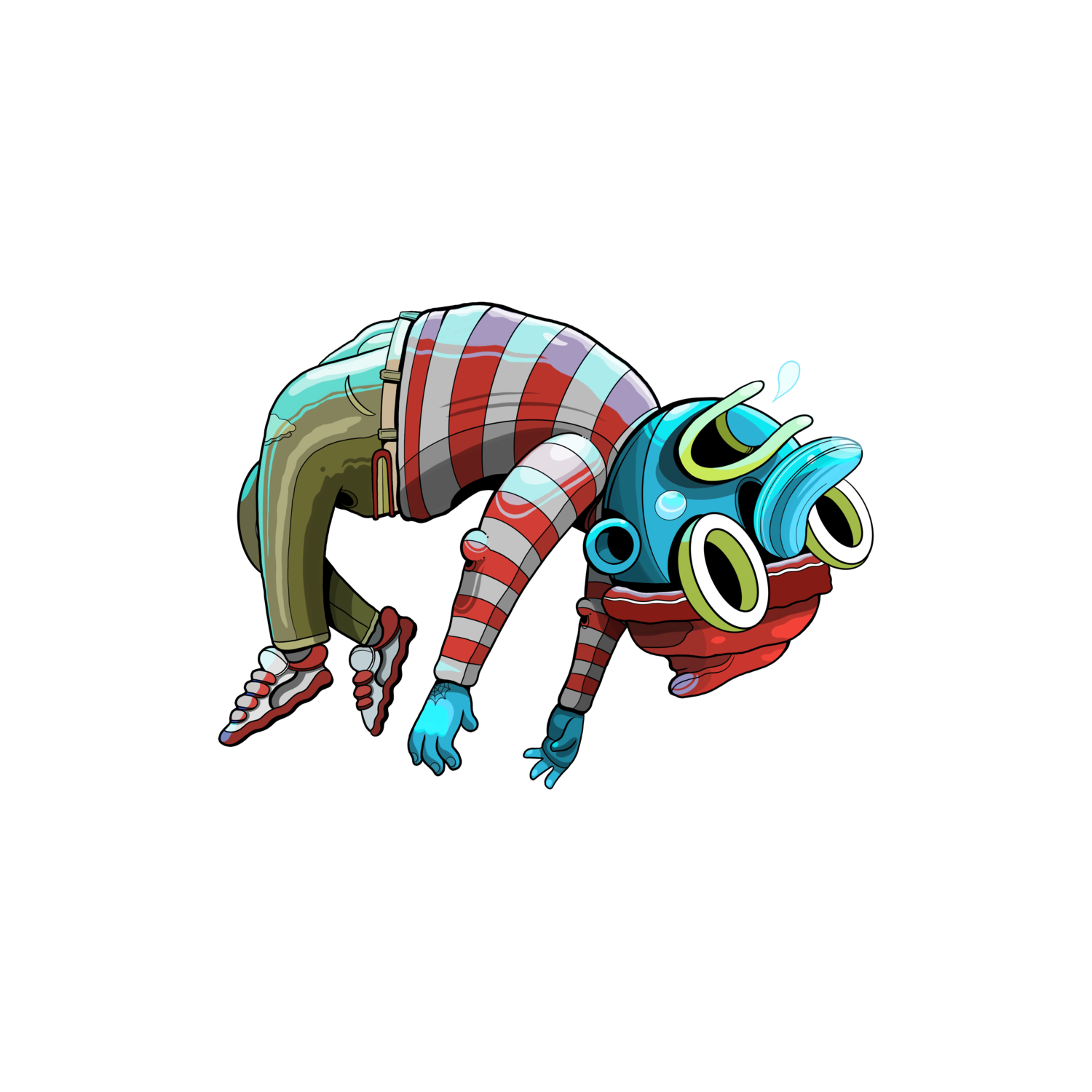Michael Roy, a.k.a. Birdcap, grew up near the bayous of southern Mississippi, on America’s verdant “third coast”, a region battered by hurricanes and scarred by a violent, racist political history. Roy studied painting at Memphis College of Art, but got his start as a muralist when he left the south and moved halfway across the world, where he became a part of the thriving street art scene in Seoul, South Korea. The character of “Birdcap” was born in South Korea. In the past decade, Birdcap’s career as a muralist has spanned continents, but the artist’s work is a product of the south, both a love letter to the region he calls home and a challenge to its problems. Birdcap works in a style equally steeped in Saturday morning cartoons and history paintings. He creates densely colored scenes that slide between references to Jim Henson and the Crossing of the Delaware. Using a vocabulary of fantastic shapes that make a Birdcap mural identifiable across the world, the artist takes up deeply personal subjects such as grief and loss, tackles political anxieties, and traverses a contemporary landscape both absurdly beautiful and troubled.
I paint colorful murals reminiscent of Saturday morning cartoons as a proxy world to explore wide ranging themes such as grief, mortality, and political upheaval. I believe a style wrapped in childhood nostalgia makes these topics more palatable. My work is a product of the American South and as such I strive to create a contemporary landscape both beautiful and troubled. My murals work as portals to a parallel landscape where the narratives can be seen with clarity and in contrast to the surrounding spaces.
I grew up in an “unincorporated census designated area” of the Mississippi Gulf Coast. In short, art was not a career prospect. I moved out when I was sixteen and began an unlikely hike towards the arts, but I always wanted to belong with my family and the region where I’m from. Murals opened an unexpected channel for that. I like murals because it is construction; the same field my Dad worked. I could talk to my dad about jobsite estimates, scaffolding, rain delays, etc. It’s not just for him of course; I like the feeling of spending a day working on the wall and then coming home tired with plans for the next day tinkering in my head. I like construction.
Coming from a place nearly nonexistent on a map, it felt like I’d never be in the right rooms to make a real living from art. The market is so far away it can feel like there’s no path to get seen. Murals make you visible. The first time I saw street art while living in South Korea, it hit me how accessible it was for me as a viewer. I stopped applying to galleries and started painting on abandoned buildings with friends. I owe my career as it stands now to the democratizing nature of putting art in public spaces.
